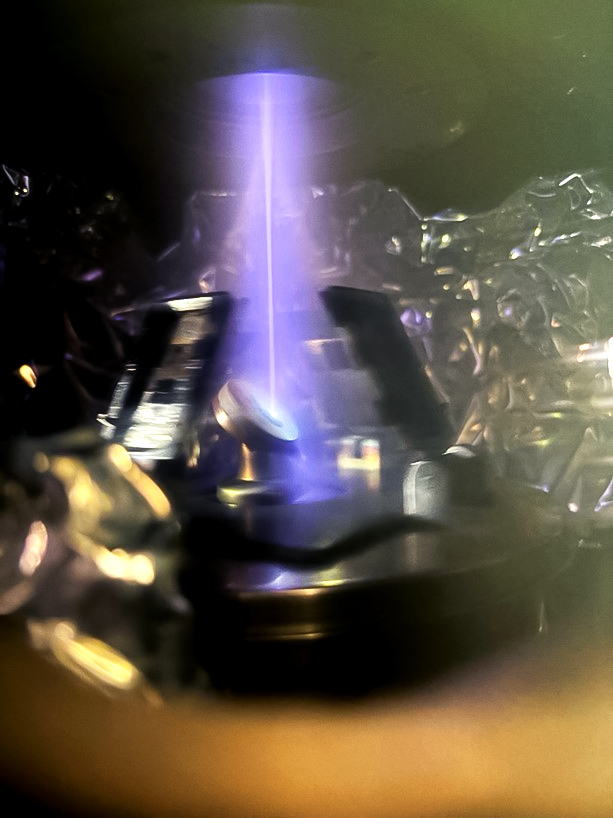Our Materials Team specialises in developing advanced materials for renewable energy and next-generation devices. Central to this work is our Ion Beam Facility at the National Isotope Centre, the only one of its kind in New Zealand. Here, researchers can precisely engineer materials at the atomic level. This capability enables breakthroughs in energy-efficient electronic materials, and the production of hydrogen and ammonia.
Over the past few years, three PhD students have worked alongside our scientists, applying ion beam and thin-film technologies to address global challenges in clean energy and advanced materials. Here's a summary on what they worked on.
Zulfitri Danial Bin Rosli – Electrochemical Pathways to Green Ammonia (University of Auckland / Universiti Kuala Lumpur)
Zulfitri’s PhD research focused on producing “green ammonia” under ambient conditions as a method of storing renewable energy and chemical hydrogen. He synthesised catalysts via ion implantation, which is a precise method for introducing nitrogen into transition metal lattices and investigated their performance using electrochemical testing and a range of ion beam analysis techniques. His work was published in ACS Catalysis and presented internationally. Now a Postdoctoral Fellow at Earth Sciences New Zealand, Zulfitri is continuing to advance catalyst development for clean energy applications.
Niall Malone – Pioneering Ion Beam Synthesis for Hydrogen Catalysts (University of Auckland)
Niall’s doctoral work explored materials with high potential as affordable and efficient hydrogen evolution catalysts. His research led to several high-impact publications and recognition, including awards for his presentation at the inaugural New Zealand Hydrogen Symposium. Since completing his PhD, Niall has combined academic research with industry, working with our deep-tech hydrogen spin-out company Bspkl, to design new electrolysis components, while continuing to push the boundaries of electrocatalysis and plasma-based systems.
The photo was captured at our Ion Beam Facility by Niall Malone.
Martin Markwitz – Transparent Materials with Power-Generating Potential (Te Herenga Waka – Victoria University of Wellington)
Martin’s PhD centred on copper(I) iodide thin films, where he used ion beam techniques to fine-tune structural defects that enhance electrical performance. His work produced multiple first-author papers across physics and materials journals, as well as award-winning presentations. Today, Martin is applying his skills at Paihau – Robinson Research Institute, where he is part of the Quantum Technologies team developing advanced materials and devices.
Building the Next Generation of Materials Researchers
The success of Zulfitri, Niall, and Martin highlights the value of collaboration between Earth Sciences New Zealand and universities across the country. By combining their fresh perspectives with the unique capabilities of our Ion Beam Facility, these students advanced the frontiers of ammonia production, hydrogen catalysis, and transparent thermoelectric materials.
Our Materials Team is proud to support the next generation of scientists and engineers. Their achievements show how New Zealand’s investment in ion beam science and advanced materials research is shaping the clean energy and high-tech solutions of the future.

